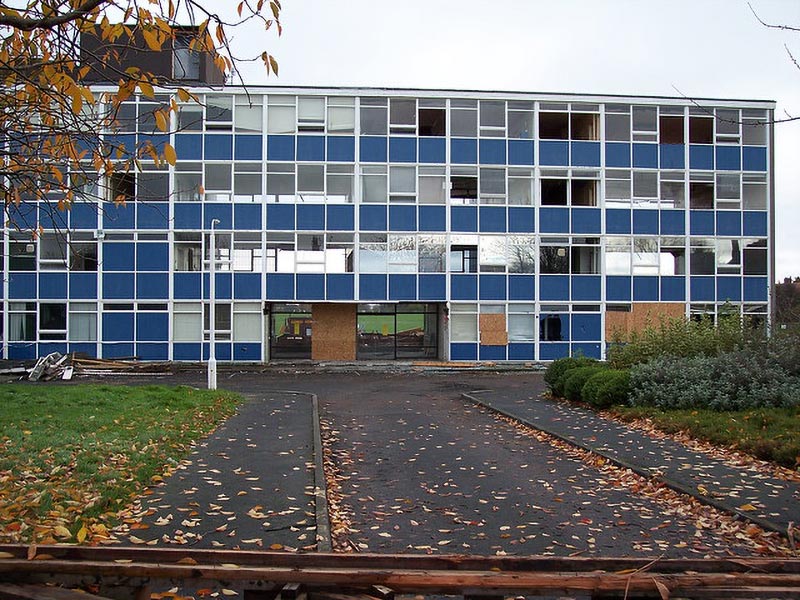If a building has RAAC, does it have asbestos?
A key theme of much media coverage in the UK this year has been the crisis in relation to reinforced autoclaved aerated concrete, the substance otherwise known as “RAAC”. Schools across the UK have been forced to close buildings amid warnings about the safety of the lightweight “crumbly concrete”, which was used in the UK construction sector from the 1950s until the 1990s.
That timeframe also corresponds with the period during which asbestos was especially heavily used in the construction and renovation of all manner of buildings in the UK. So, it cannot be a great surprise that both RAAC and asbestos have been subjects of concern among those responsible for managing, maintaining, and repairing non-domestic premises in recent times.
In the 2020s, many observers might reasonably ask – in light of the serious issues that have emerged with both materials down the years – why RAAC and asbestos were ever used at all. Indeed, there is much overlap in the reasoning for the use of both asbestos and RAAC, including their relatively low cost and fire resistance properties compared to alternative substances.
A major downside of both materials, though, is that in buildings where they were installed many decades ago – and may now remain – they are deteriorating in condition. This, in turn, could mean they pose serious risks to the health and safety of those who use such premises.
Below, we have taken a closer look at the associations that can be drawn between RAAC and asbestos, including the question of whether a given building containing RAAC could be an indicator that it also has asbestos.

The types of buildings prone to containing RAAC and asbestos
It is worth emphasising that there is no direct link between asbestos and RAAC; they are different materials, with separate respective issues.
However, with the peak period of use for both materials in the UK construction industry having been from around the 1950s until the 1980s or 1990s, in many cases, there is a strong chance that a given property found to contain RAAC, will also contain asbestos.
Below are some examples of building types in the UK that are particularly likely to contain both materials, especially if they were built or renovated during the second half of the 20th century:
- Industrial facilities and manufacturing plants
- Commercial and office buildings
- Residential structures
- Public infrastructure, such as schools and hospitals
Identifying RAAC and asbestos in buildings
As a general rule, it is best that a building owner or manager who does not have relevant qualifications and expertise in asbestos and RAAC avoids attempting to identify for themselves whether these substances are in their buildings.
There could, after all, be safety issues in trying to do this, such as the risk of asbestos-containing materials (ACMs) being disturbed, and dangerous asbestos fibres being released as a consequence of this.
So, whether it is RAAC, asbestos, or both that you are on the lookout for in your buildings, we would urge you to engage the services of suitably qualified professionals, such as an accredited asbestos surveyor in the case of asbestos, and a chartered building surveyor or chartered structural engineer in the case of RAAC.
However, it is worth being aware of the parts of a building in which these materials might be especially likely to be present. Both RAAC and asbestos were noted for their insulation qualities, for example, and during its period of use, RAAC tended to be used in flat roofs, as well as in some floor and wall panel construction.
So, there might be a strong chance of RAAC being present in such areas of your building as:
- The insulation materials
- Heating, ventilation, and air conditioning (HVAC) systems
- Roofing materials
- Fireproofing and soundproofing applications
There are certain other steps that you could take to determine whether RAAC, asbestos, or both, could be present in buildings for which you are responsible. You could ask your local authority, for instance, whether there are any similar buildings to yours in the area that are known to have had RAAC roof or floor planks installed.
It could also be a good idea to look at relevant historical records and building documentation. There might be records of work that has previously been carried out in relation to asbestos in the building, or about RAAC used in the premises’ construction.
It is worth being aware on the latter point, though, that even if RAAC was used in the construction of a particular building, this might not be explicitly referenced in old records. However, if certain product names are used – such as Durox, Siporex, Celcon, Ytong, or Hebel – this would indicate that RAAC was used.
The health and safety concerns presented by RAAC and asbestos
Both RAAC and asbestos present potential risks to health and safety in certain circumstances, and these risks can directly interact with each other.
A relatively obvious example of this would be if a classroom roof made from RAAC was to suddenly collapse. Not only would the collapse itself pose a clear physical danger to building occupants and users, but it could also cause disturbance to ACMs in the same part of the premises. If that was to occur, loose asbestos fibres could be released, and subsequently breathed in by someone nearby.
Such inhalation or ingestion of asbestos fibres could present a heightened risk of the exposed individual developing a potentially fatal asbestos-related disease – such as mesothelioma or asbestos-related lung cancer – many years, or even decades later.
Even in the absence of asbestos in the given part of the building, the collapse of a RAAC floor, roof, or wall could present a serious risk of physical injury to everyone in the affected area of the property. This risk could be especially great given the role RAAC may play in the broader physical integrity of a building in which it is installed.
So, you can probably begin to see why it is so crucial – if you do suspect that RAAC, asbestos, or both could be present in a building for which you are responsible – to arrange for professional surveying and assessment of the situation on your site.
This, in turn, will allow you to explore potential mitigation and removal options in the event that either or both substances do turn out to be present, while ensuring you make suitably informed decisions.
Legal and regulatory considerations
Asbestos was finally banned in all its forms in the UK in 1999, and it has not been legal to use asbestos in sectors such as construction since then. Over the intervening years, stringent regulations have been put in place to help control the risks asbestos can pose.
The principal plank of this regulatory regime for asbestos is the Control of Asbestos Regulations 2012 (CAR 2012). This legislation outlines a “duty to manage” asbestos for those who manage non-domestic premises, which includes an obligation to take reasonable steps to determine whether ACMs are present in the given building. Dutyholders under this regulation are also expected to put together a plan, setting out how the risks from such materials will be managed.
By contrast, there is presently a lack of regulations in the UK that specifically address RAAC. However, it is worth bearing in mind such other areas of law as the Defective Premises Act 1972, which sets out that building owners have an ongoing responsibility for repairs to the structure of their property. Such building owners also hold a duty of care towards their tenants and any third parties who might sustain injury as a consequence of their failure to maintain or repair the building.
Best practices for managing RAAC and asbestos
Many of the fundamentals of effective and safe management of RAAC and asbestos are much the same for both materials. These include the importance of developing an inspection and management plan that will help identify whether these materials are present in the given building in the first place, followed by steps to control and minimise the risks they may pose.
The UK Health and Safety Executive (HSE) advises that building owners or managers of estates should take steps to identify RAAC in their buildings, and seek professional advice to assess it, so that an effective management plan can be developed.
Similarly, when it comes to possible asbestos materials in the given building, dutyholders under CAR 2012 are obliged to identify whether ACMs are present in their buildings, as well as the location, amount, and condition of any such materials. This information will enable them to assess the risks that the materials present, so that they can take informed decisions to help manage those risks.
Putting in place a system of periodic re-assessment and monitoring for both RAAC and asbestos, and educating yourself on safe removal and disposal procedures – as well as seeking professional advice and help – will put you in the best possible position to manage the risks responsibly.
Conclusion: RAAC being present might also mean asbestos being present
To recap, the fact of a particular building being found to contain RAAC does not necessarily mean that asbestos will also be present in the same building; there is no direct link between the two materials in this sense.
However, with asbestos and RAAC having both been used in the construction sector in the UK at around the same time in history, it is true that RAAC and asbestos will often co-exist in buildings constructed from around the 1950s to the 1990s (or that were renovated during this timeframe).
A particular source of concern is the scope for RAAC and asbestos risks to interact – for example, if the collapse of a RAAC wall or ceiling also results in the dangerous disturbance of nearby asbestos materials, such as insulation products or wall or ceiling coatings.
Whatever the exact situation may be in your own building, the importance of proactive and responsible management and mitigation of any RAAC or asbestos risks that can or do exist, should not be in doubt.
If you are concerned about the asbestos risks that might exist in a building for which you are responsible, and you are anxious to ensure you fulfil your legal obligations in this regard, please don’t hesitate to contact our experts at Oracle Solutions for further advice and guidance.

Written by Callum McDonald
Callum McDonald is an expert in asbestos quality management, ensuring rigorous adherence to regulations and high-quality standards in removal projects. His focus on enhancing quality and client satisfaction makes him a crucial asset in safety and compliance within the field. Callum's expertise in technical support and oversight of licensed works underscores his commitment to excellence in asbestos management, providing invaluable guidance to clients in this specialised area.
